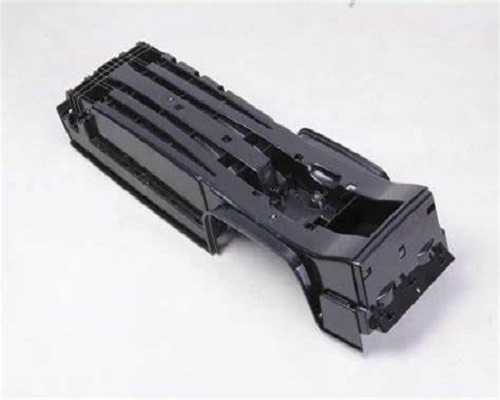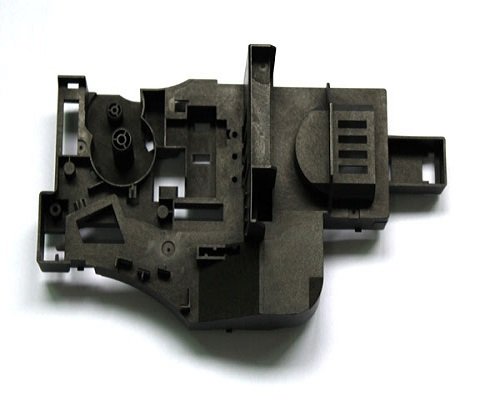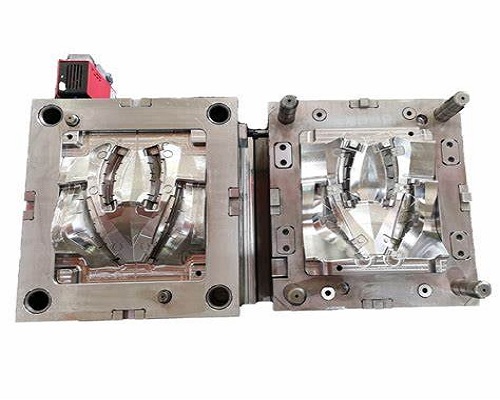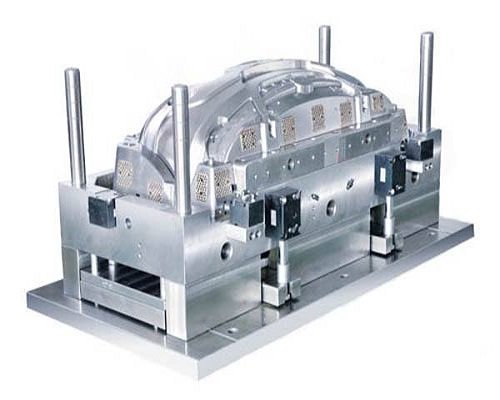Prototyping and Manufacturing Application in Auto parts Industries
Fast-Track Auto Parts Manufacturing: Prototype to Mass Production. Accelerate your auto parts development with Yigu Technology’s end-to-end manufacturing solutions—from rapid prototyping to high-volume production.
Key Benefits:
✅ Speed: Reduce time-to-market with agile prototyping and scalable production.
✅ Precision: CNC machining, 3D printing, and injection molding for high-accuracy parts.
✅ Cost Efficiency: Optimized processes to cut waste and lower unit costs.
✅ Quality Compliance: ISO-certified production meets automotive industry standards.
Ideal for OEMs and suppliers needing reliable, fast, and cost-effective manufacturing.
1. Introduction to Rapid Prototyping and Mass Production in Auto Parts Industries
1.1 Definition of Rapid Prototyping
Rapid prototyping is a group of techniques used to quickly fabricate a scale model of a physical part or assembly using three-dimensional computer-aided design (CAD) data. It involves creating a prototype through additive manufacturing processes such as 3D printing. For example, in the auto parts industry, designers can use CAD software to create a virtual model of a new car part and then use a 3D printer to produce a physical prototype within hours. This allows engineers to quickly test the part's design, fit, and function before committing to mass production.
1.2 Definition of Mass Production
Mass production refers to the manufacturing of large quantities of standardized products using specialized machinery and assembly line techniques. In the auto parts industry, this typically involves producing millions of identical parts in a highly efficient and cost-effective manner. For instance, a major auto parts manufacturer might use robotic arms and automated conveyors to produce thousands of brake pads per day. The focus is on minimizing production costs and maximizing output while maintaining consistent quality.
1.3 Importance in Auto Parts Manufacturing
The combination of rapid prototyping and mass production is crucial for the auto parts industry. Rapid prototyping allows for quick iteration and innovation, enabling manufacturers to respond rapidly to market demands and technological advancements. For example, a new engine component can be prototyped and tested within days, allowing for design improvements before mass production begins. Mass production, on the other hand, ensures that these improved designs can be produced at scale to meet the high demand from automakers. This dual approach not only speeds up the development cycle but also reduces the risk of production errors and improves overall product quality.
2. Rapid Prototyping Techniques in Auto Parts
2.1 3D Printing
3D printing is a key technique in rapid prototyping for the auto parts industry. It allows for the creation of complex geometries that would be difficult or impossible to achieve with traditional manufacturing methods. For example, a car's intake manifold, which has intricate internal channels, can be precisely printed using 3D printing technology. This method reduces the time from design to prototype by up to 80% compared to traditional methods. Additionally, 3D printing can use various materials, including high-strength plastics and metals, which are suitable for functional testing. Companies like General Motors have used 3D printing to produce lightweight parts, reducing vehicle weight by up to 10% and improving fuel efficiency.
2.2 CNC Machining
CNC machining is another important rapid prototyping technique used in the auto parts industry. It involves using computer-controlled machines to cut and shape materials with high precision. For instance, a CNC mill can produce a metal prototype of a car's suspension component with tolerances as tight as ±0.001 inches. This level of precision is crucial for ensuring the part's fit and function. CNC machining is also versatile, allowing for the use of a wide range of materials, from aluminum to titanium. The process can be completed in a matter of hours, making it ideal for rapid prototyping. Furthermore, CNC machining can be easily scaled up for small batch production, providing a seamless transition from prototype to production.
2.3 Injection Molding
Injection molding is a widely used technique in the auto parts industry for both prototyping and mass production. In the prototyping stage, injection molding allows for the creation of multiple identical parts quickly. For example, a plastic dashboard component can be prototyped using injection molding in a few days. This technique uses a mold into which molten material is injected under high pressure. The mold can be made from aluminum for prototyping purposes, which is less expensive and quicker to produce than steel molds used in mass production. Once the prototype is approved, the same mold design can be used to create steel molds for mass production, ensuring consistency in design and quality. Injection molding is cost-effective for producing large quantities of parts and can achieve high levels of detail and surface finish, making it suitable for both interior and exterior auto parts.
3. Mass Production Methods in Auto Parts
3.1 Stamping and Forging
Stamping and forging are essential mass production methods in the auto parts industry, known for their ability to produce large quantities of strong, durable parts with high precision.
- Stamping: This process involves using powerful presses to shape metal sheets into desired parts. For example, car body panels such as doors, hoods, and fenders are commonly produced through stamping. Modern stamping presses can operate at speeds of up to 15 strokes per minute, producing thousands of parts per day. The precision of stamping allows for tight tolerances, often within ±0.01 inches, ensuring that parts fit perfectly during assembly. Additionally, advancements in tooling and materials have enabled the production of lighter and stronger parts, contributing to improved fuel efficiency and vehicle performance.
- Forging: Forging is used to create parts that require high strength and reliability, such as engine crankshafts and connecting rods. The process involves shaping metal by applying compressive forces using forging hammers or presses. Forged parts have superior mechanical properties compared to cast or machined parts due to the alignment of grain flow during the forging process. A typical forging press can exert forces up to several thousand tons, enabling the production of large and complex parts. The use of advanced simulation software helps optimize the forging process, reducing material waste and improving part quality.
3.2 Die Casting
Die casting is a highly efficient mass production method used to produce complex metal parts with high accuracy and surface finish.
- Process: In die casting, molten metal is forced into a reusable metal mold under high pressure. The mold, known as a die, is typically made from steel and can withstand the high temperatures and pressures involved in the process. Zinc and aluminum are the most commonly used materials in die casting due to their excellent casting properties and lightweight nature. For example, many small automotive parts such as engine components, transmission cases, and wheel hubs are produced through die casting.
- Advantages: Die casting allows for the production of parts with thin walls and complex geometries that are difficult to achieve with other manufacturing methods. The high pressure ensures that the molten metal fills the mold completely, resulting in parts with minimal porosity and excellent dimensional accuracy. The process is highly automated, with cycle times ranging from a few seconds to a minute, enabling the production of millions of parts per year. Additionally, the use of advanced cooling techniques and mold coatings helps improve the surface finish and durability of the parts.
- Applications: In the auto parts industry, die-cast parts are used in both structural and non-structural applications. Structural parts such as engine blocks and suspension components benefit from the high strength and rigidity of die-cast aluminum, while non-structural parts like interior trim components and exterior accessories take advantage of the lightweight and aesthetic properties of die-cast zinc.
4. Case Studies of Auto Parts
4.1 Case Study: Prototype Development for a New Engine Component
In the highly competitive auto parts industry, the development of a new engine component is a prime example of how rapid prototyping can accelerate innovation. A leading auto parts manufacturer was tasked with creating a prototype for a new engine component that promised to improve fuel efficiency and reduce emissions. Utilizing 3D printing technology, the design team was able to produce the first prototype within 48 hours of finalizing the CAD model. This rapid turnaround time allowed engineers to conduct initial fit and function tests, identifying potential design flaws early in the process.
The prototype was subjected to rigorous testing, including stress analysis and thermal testing, to ensure it could withstand the demanding conditions of an engine compartment. Feedback from these tests was quickly incorporated into the design, and a revised prototype was produced within another 24 hours. This iterative process continued until the final design was approved, significantly reducing the development time compared to traditional methods. The successful prototype was then seamlessly transitioned to mass production, leveraging the existing manufacturing infrastructure to produce the component at scale.
4.2 Case Study: Mass Production of Brake Systems
The mass production of brake systems is a critical aspect of the auto parts industry, given the high demand and safety requirements. A major auto parts manufacturer specializing in brake systems implemented advanced stamping and forging techniques to produce high-quality brake rotors and calipers. The stamping process was optimized to produce brake rotors with tight tolerances, ensuring consistent braking performance. The company invested in state-of-the-art stamping presses capable of operating at high speeds, producing thousands of rotors per day.
Forging was used to create the brake calipers, which required high strength and reliability. Advanced simulation software was employed to optimize the forging process, reducing material waste and improving part quality. The forged calipers were then machined to precise specifications, ensuring a perfect fit with the brake rotors. The entire production process was highly automated, with robotic arms and automated inspection systems ensuring consistent quality and reducing the risk of defects.
The company's focus on continuous improvement led to a 15% reduction in production costs and a 20% increase in production output. The high-quality brake systems produced were well-received by automakers, leading to long-term contracts and a strong market position for the manufacturer.
4.3 Case Study: Integration of Prototyping and Production for a Dashboard
The integration of rapid prototyping and mass production is exemplified in the development and production of a new car dashboard. A prominent auto parts supplier was contracted to design and manufacture a dashboard that combined advanced technology with ergonomic design. The project began with the creation of a virtual model using CAD software, which was then used to produce a 3D-printed prototype. This prototype allowed designers to evaluate the dashboard's layout, user interface, and overall functionality.
Feedback from initial testing led to several design modifications, which were quickly incorporated into a revised prototype. The use of CNC machining ensured that the prototype's components were produced with high precision, allowing for accurate fit and function testing. Once the prototype was approved, the company transitioned to mass production using injection molding techniques.
Injection molding was used to produce the dashboard's plastic components, with aluminum molds initially used for prototyping and steel molds for mass production. The company's investment in advanced injection molding technology enabled the production of high-quality parts with intricate details and excellent surface finish. The production process was highly automated, with robotic arms and automated conveyors ensuring efficient assembly and quality control.
The successful integration of prototyping and production resulted in a dashboard that met the stringent requirements of automakers. The supplier's ability to quickly iterate and produce high-quality parts led to a strong partnership with major automotive manufacturers, further solidifying its position in the auto parts industry.
5. Advantages of Rapid Prototyping in Auto Parts
5.1 Faster Design Iterations
Rapid prototyping significantly accelerates the design iteration process in the auto parts industry. Traditional methods of creating prototypes often involve time-consuming processes such as manual machining and mold making, which can take weeks or even months. In contrast, rapid prototyping techniques like 3D printing can produce a prototype within hours or days. For example, a study conducted by a leading auto parts manufacturer showed that the use of 3D printing reduced the time from design to prototype by up to 80% compared to traditional methods. This allows engineers to quickly test and refine designs, leading to faster product development cycles. The ability to rapidly iterate designs also enables manufacturers to respond more quickly to market demands and technological advancements, giving them a competitive edge in the industry.
5.2 Cost Reduction
Rapid prototyping helps reduce costs in several ways. Firstly, the ability to quickly produce prototypes minimizes the need for expensive tooling and molds, which are typically required in traditional manufacturing processes. For instance, in injection molding, creating a steel mold for a new part can cost tens of thousands of dollars. By using rapid prototyping techniques such as 3D printing, manufacturers can create initial prototypes without the need for expensive molds, thereby reducing upfront costs. Secondly, rapid prototyping allows for early detection of design flaws, reducing the likelihood of costly mistakes during mass production. A study by a major auto parts supplier found that the use of rapid prototyping led to a 25% reduction in overall development costs. Additionally, the iterative nature of rapid prototyping enables manufacturers to optimize designs for material usage and production efficiency, further contributing to cost savings.
5.3 Enhanced Innovation
Rapid prototyping fosters a culture of innovation in the auto parts industry. The ability to quickly produce and test prototypes encourages designers and engineers to experiment with new ideas and concepts. For example, the use of 3D printing allows for the creation of complex geometries and lightweight structures that were previously impossible or impractical to produce. This has led to the development of more efficient and sustainable auto parts, such as lightweight engine components that improve fuel efficiency. Moreover, rapid prototyping enables manufacturers to incorporate user feedback and market trends into their designs more quickly, resulting in products that better meet customer needs and preferences. The iterative process of rapid prototyping also promotes collaboration between different departments within a company, such as design, engineering, and manufacturing, leading to more comprehensive and innovative solutions.
6. Challenges in Mass Production of Auto Parts
6.1 Quality Control
Quality control is a critical challenge in the mass production of auto parts, as even minor defects can have significant consequences for vehicle safety and performance. The auto parts industry operates with stringent quality standards, often adhering to ISO 9001 and other industry-specific certifications. However, maintaining consistent quality across millions of parts is complex.
- Variability in Production: Mass production processes, such as stamping and die casting, can introduce variability due to factors like tool wear, material inconsistencies, and process fluctuations. For example, a study by a major auto parts manufacturer found that tool wear in stamping processes could lead to dimensional variations in parts, with tolerances drifting by up to ±0.02 inches over time. This variability necessitates frequent tool maintenance and calibration to ensure consistent quality.
- Automated Inspection Limitations: While automated inspection systems, such as vision systems and sensors, are widely used to detect defects, they are not infallible. False positives and false negatives can occur, leading to either unnecessary rework or defective parts passing through undetected. A report by the Society of Automotive Engineers (SAE) indicated that automated inspection systems have an average error rate of 5%, highlighting the need for continuous improvement in inspection technologies.
- Human Error: Despite high levels of automation, human involvement in the production process, such as during setup and maintenance, can introduce errors. For example, incorrect setup of injection molding machines can lead to defects like short shots or warpage. Training programs and standardized operating procedures are essential to minimize human error and ensure consistent quality.
6.2 Supply Chain Management
Effective supply chain management is crucial for the mass production of auto parts, as disruptions can lead to production delays and increased costs. The auto parts industry relies on a complex network of suppliers, manufacturers, and logistics providers to ensure a steady flow of materials and components.
- Supplier Reliability: Ensuring the reliability of suppliers is a significant challenge. Suppliers must meet strict quality and delivery requirements, and any failure to do so can disrupt production. A study by the Automotive Industry Action Group (AIAG) found that 30% of supply chain disruptions in the auto parts industry are due to supplier quality issues. This underscores the importance of rigorous supplier evaluation and ongoing monitoring to ensure consistent performance.
- Logistics and Inventory Management: Efficient logistics and inventory management are essential to maintain a smooth production flow. Delays in transportation or inaccurate inventory levels can lead to production stoppages. For example, a major auto parts manufacturer reported that a 10% reduction in inventory accuracy led to a 15% increase in production downtime. Implementing advanced logistics systems and real-time inventory tracking can help mitigate these issues.
- Global Sourcing Risks: Many auto parts manufacturers source materials and components globally, which introduces additional risks such as geopolitical tensions, trade policies, and natural disasters. A report by the World Economic Forum highlighted that trade disputes can increase the cost of raw materials by up to 20%, while natural disasters can disrupt supply chains for extended periods. Diversifying suppliers and developing contingency plans are essential strategies to manage these risks.



